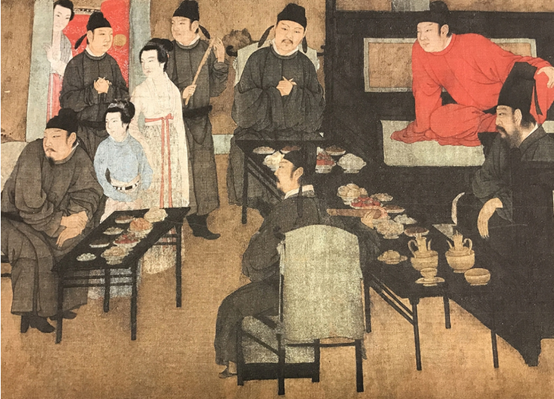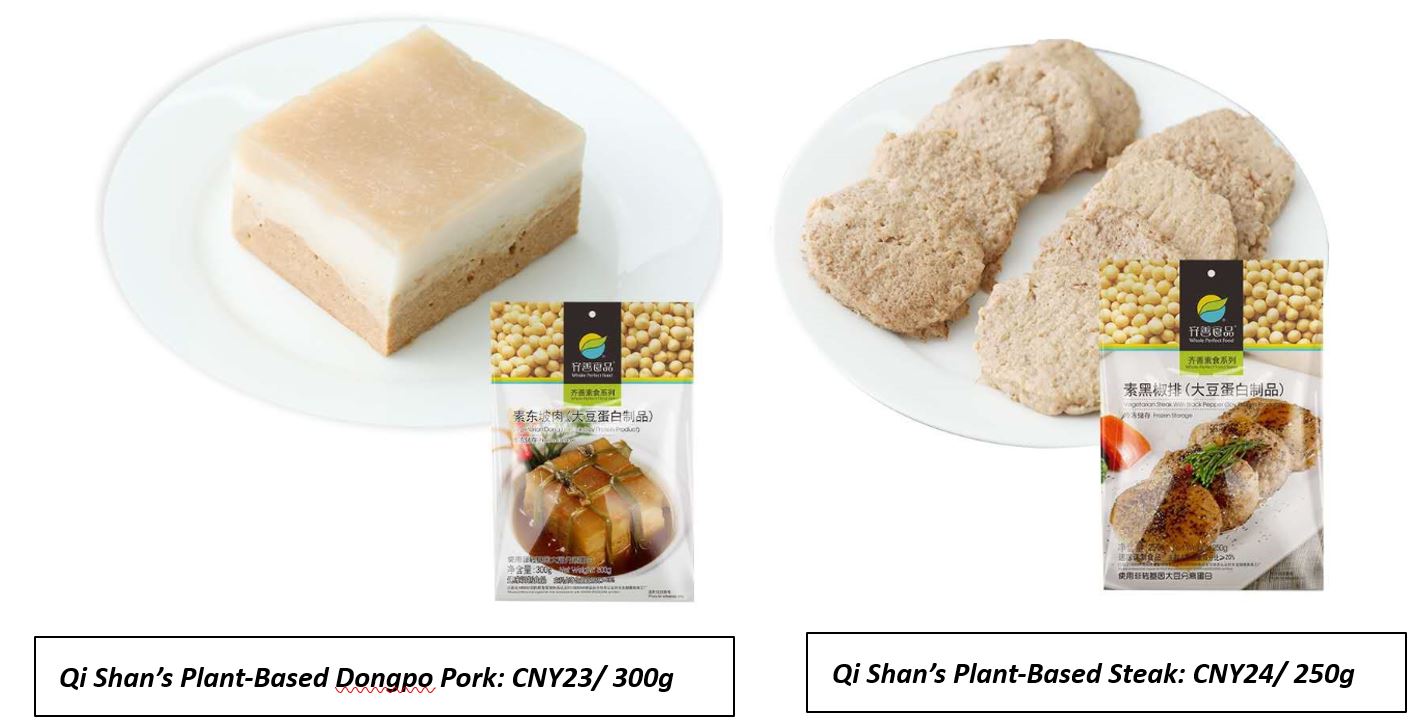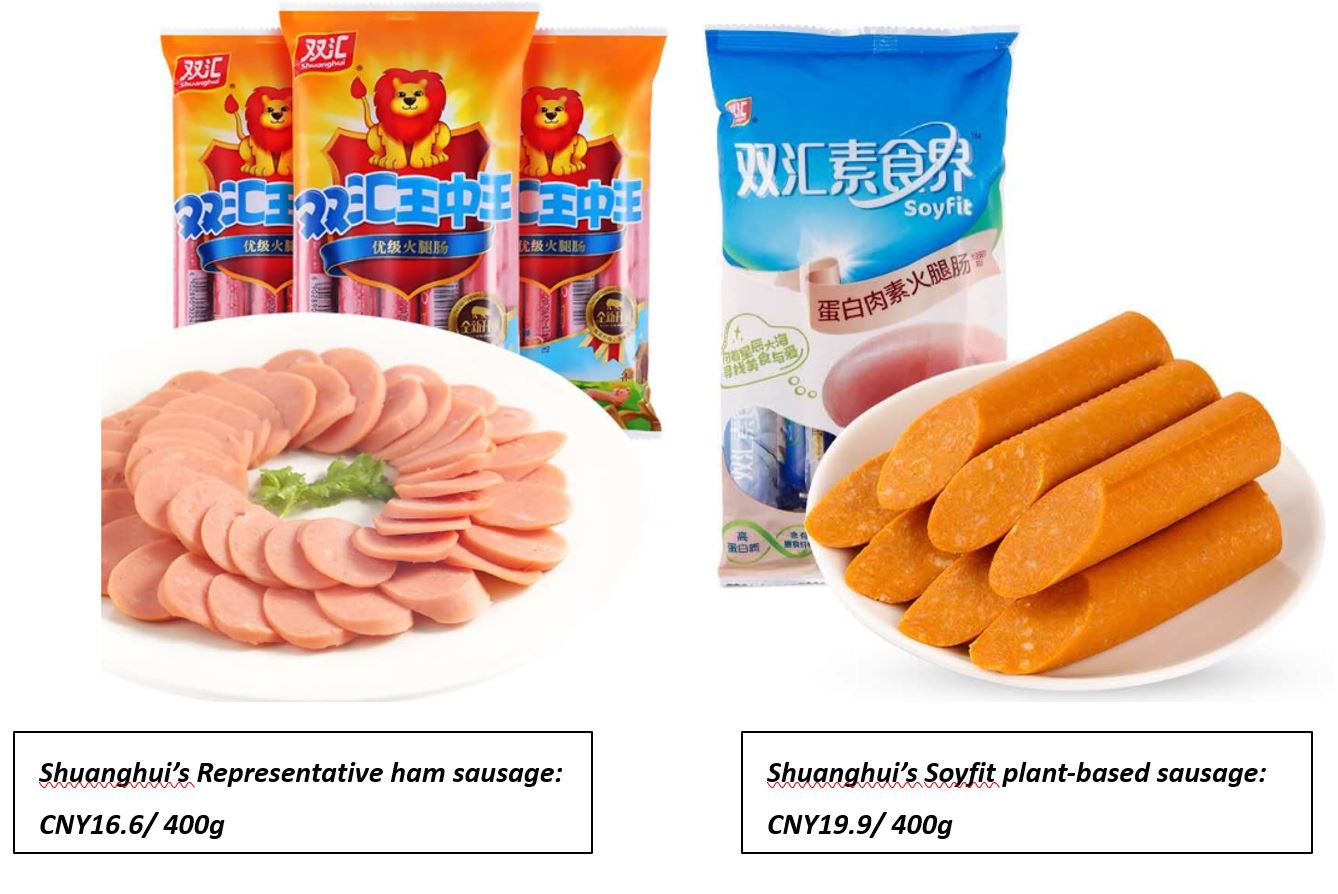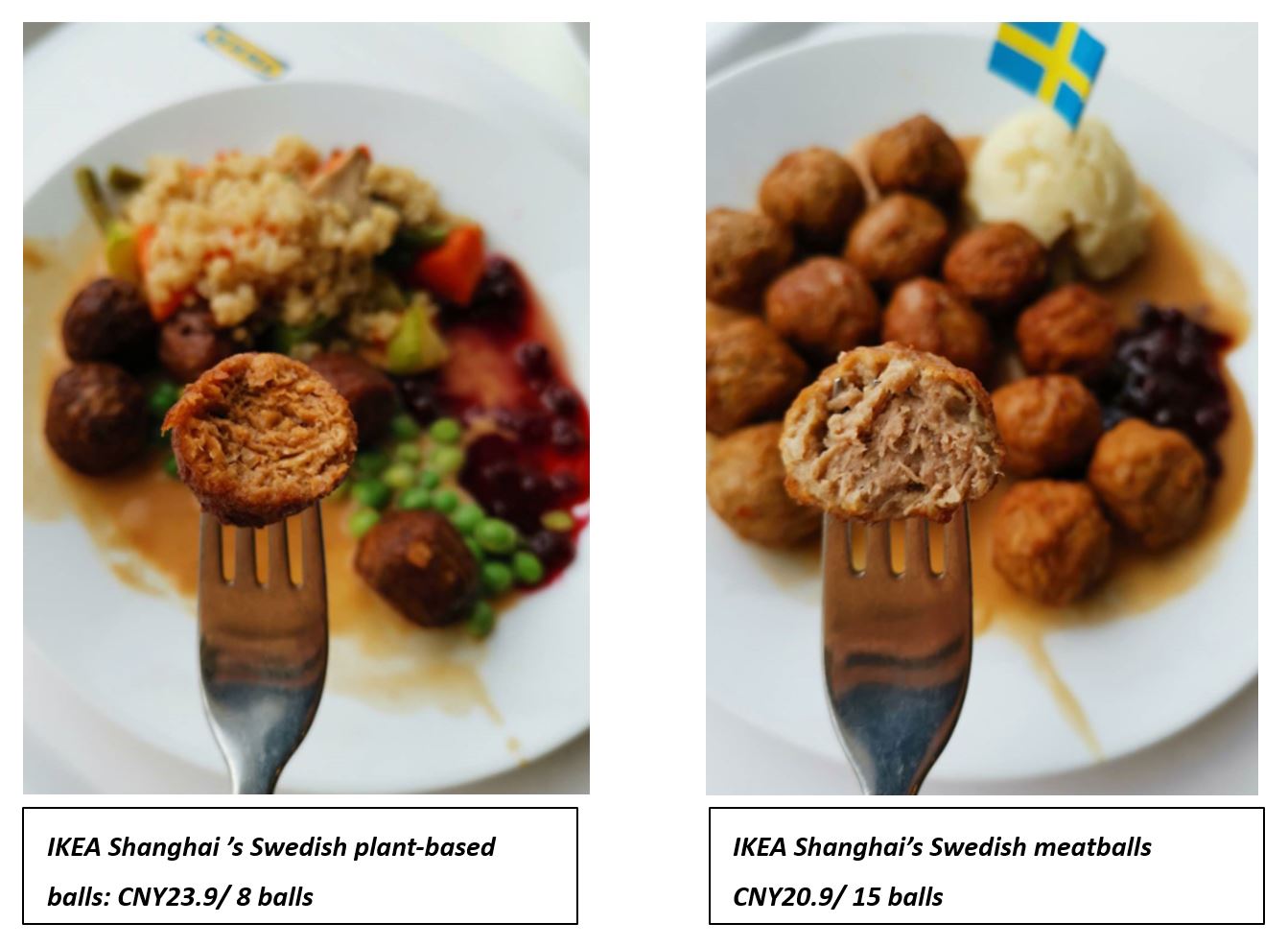



A Different Story about the Origin and Development of Alternative Protein in China
Contrary to recent popular belief that China’s alternative protein market is still in its very early stage, the industry can be traced back as early as the Western Han Dynasty (202 BC – 8 AD), when the King of Huainan Liu An invented tofu, the key ingredients and excellent protein for traditional vegetarian diets.However, vegetarian diets did not become popular and specialised until the Song Dynasty (960 – 1279). This is also the first time that imitation meat is served in family kitchens and local restaurants, made from flour, taro, soybeans, etc. One important point to note is that, people in the Song Dynasty were used to identifying meat dishes with vulgar noveau riche, while vegetarian diets were deemed as elegant and noble.
For example, one of China’s famous ancient paintings Night Revels of Hanxizai graphically illustrates the dining habits of the upper class during that period. Despite his position as a senior official, Hanxizai treated each distinguished guest with only eight lightly flavoured dishes, rather than an abundance of fish and meat.
(One section of Night Revels of Hanxizai)
With Buddhism’s introduction into China, vegetarian diets were further popularised both in the palace and outside, or in the form of temple cuisine. The Buddhist blessings and religious concept of ahimsa – non-violence to all creatures – reflected their concerns about health and animal welfare at that time.
The long history and development of vegetarian diets seems a good premise for the introduction of alternative protein products to modern Chinese consumers today. Nevertheless, just as a coin has two sides, the longstanding development of vegetarian diets could also impose both positive and negative impacts on its successor – plant-based meat alternatives.
Local traditional vegetarian processing plants and restaurants: Stereotyped consumer group
Whole Perfect Food (Qi Shan), one of China’s leading vegetarian processors, has produced and distributed dozens of plant-based pork, beef, chicken, mutton and fish products through online e-commerce platforms like Tmall and JD, offline vegetarian restaurants and local temples over the past 30 years.


With Buddhism’s introduction into China, vegetarian diets were further popularised both in the palace and outside, or in the form of temple cuisine. The Buddhist blessings and religious concept of ahimsa – non-violence to all creatures – reflected their concerns about health and animal welfare at that time.
The long history and development of vegetarian diets seems a good premise for the introduction of alternative protein products to modern Chinese consumers today. Nevertheless, just as a coin has two sides, the longstanding development of vegetarian diets could also impose both positive and negative impacts on its successor – plant-based meat alternatives.
Local traditional vegetarian processing plants and restaurants: Stereotyped consumer group
Whole Perfect Food (Qi Shan), one of China’s leading vegetarian processors, has produced and distributed dozens of plant-based pork, beef, chicken, mutton and fish products through online e-commerce platforms like Tmall and JD, offline vegetarian restaurants and local temples over the past 30 years.


However, despite its time-honored reputation and largest market share among China’s vegetarian processing industry, its annual operating revenue was only half of that of Beyond Meat in 2018. The major reason is that although vegetarianism and veganism have existed for more than 2,000 years in China, it is still considered as a niche market with a highly stereotyped consumer group, which mainly consists of Buddhists, Taoists and macrobiotic adherents for religious and personal health purposes.
Local traditional meat producers and processors: a prompt cross-category extension
While domestic vegetarian companies are actively seizing the opportunity to upgrade the image of their plant-based products, those traditional pig-breeding and meat processing companies are also taking the initiative to expand their product portfolio into the meat alternative area. Two typical examples are Tangrenshen Group and Shuanghui Development.
Tangrenshen, one of China’s major pork producers, announced the setting up of the Tangrenshen – Jiangnan University Innovative Food Joint Research Institute, focusing on the research and development of double protein meat (animal and plant protein).
Not to be outdone, Shuanghui, China’s largest meat processor, acquired shares of DuPont Protein and DuPont Food this May. Both companies focus on the development of plant protein, a strong signal that China’s traditional meat food companies have started to enter the emerging meat alternative area to further diversify their product mix and strengthen the overall competitiveness.


By joining up with Alibaba, Taobao and Tmall, Shuanghui launched its first limited edition plant-based protein product: the Shuanghui “Soyfit” Vegan Meat, with a key marketing concept that it is non-genetically modified, high in protein and dietary fiber, low in fat and cholesterol.
Shuangta Food: a role transformation from a raw material supplier of pea protein to a brand manufacturer of plant-based meat
Since Beyond Meat, a major stock in plant-based meat alternatives, went public last May on NASDAQ, the concept stocks related to meat alternatives in China’s A share market have skyrocketed. Especially for Shuangta Food, its stock price reached five-day consecutive up limit last May, as it is regarded as China’s most representative stock in this sector.
One unique advantage for Shuangta is its role as a direct raw material supplier to domestic plant-based meat brand Zhenmeat and overseas to Beyond Meat, and as an indirect supplier for KFC’s plant-based fried chicken. It is the largest pea protein manufacturer both at home and abroad, accounting for 30%~40% of the global production capacity.
Shuangta announced the launch of its nine plant-based meat products at a press conference last month, including beef balls, minced pork cake, chicken cutlets, hams, sausages, etc. All are made of pea protein. Meanwhile, the company published its Peas Ecosystem Strategy, marking its transformation from a pure pea protein supplier to a brand manufacturer of plant-based meat.
The performance of overseas players in China’s market: still in their pilot phase
The global media’s attention focused on China’s huge potential as a major untapped market, when the overseas market leader Beyond Meat announced to invest in the local processing industry and enter China’s retail market by cooperating with Starbucks and Hema (Fresh Hippo) this year. Driven by such a trend, local startups, such as Starfield and Zhenmeat, are also eager to establish partnerships with foodservice enterprises.
However, the media coverage does not mean alternative protein has been accurately understood and widely accepted by Chinese consumers. Up to the end of this year, both local and overseas plant-based meat startups are just testing the waters with quite limited supply offerings in local restaurants. Out of these initiatives, the furniture retailer IKEA Shanghai, somewhat outshined others by its regular supply of plant-based products in its restaurants.
IKEA Shanghai: REGULARLY serving plant-based balls
IKEA Shanghai has made a good beginning in this emerging sector by serving plant-based balls as regular as their traditional Swedish meatballs in their five local restaurants since this November. But the feedback gathered by IQC Insights from onsite staff and customers reveals the majority of customers still simply regard this as an additional choice for vegetarians, and few directly connect the product with plant protein, animal welfare, environmental protection and even sustainable development.


The above two pictures show that the plant balls and traditional meatballs look similar, but they taste quite different. The plant balls, mostly made with pea protein, taste softer and looser than meatballs, which are made with pork and beef. To quantify such feelings, the meatballs need to be chewed for 30 times before swallowing, while plant balls only for 20 times. Furthermore, the meatballs have clear pork and beef smell and flavour, but plant balls are more neutral.
In terms of retail prices, the price of each plant ball is 114% more expensive than each Swedish meatball. This could explain why the sales volume of plant balls are currently much lower than that of meatballs, besides the smaller consumer group of vegetarians.
Opportunities and challenges under ASF and COVID-19
The outbreak and spreading of African Swine Fever (ASF) in China since August 2018 have caused a sharp decline in the domestic pork supply. The pork production for the first half of 2020 decreased by 19.1% year-on-year to 19.98 million tons, while for the full year of 2020, it is expected to reach 39.34 million tons, falling by 7.5% compared to 2019. ASF affected China’s pork production mainly in 2019 and 2020, and the current live pig inventory level has recovered to 88% of the normal level at the end of 2017, just before the outbreak of ASF in China.
The reduced pork supply drove up the domestic live pig price by 123% compared to 2017. Consequently, local consumers’ consumption of pork has been heavily dampened. Under such circumstances, some price-sensitive consumers could turn to cheaper chicken, while those nutrition-focused buyers could replace pork with beef, due to their greatly-narrowed price gap from 2018 onwards.
The local pork supply-demand imbalance has also promoted a great increase in the import of pork and other meat categories, such as beef and chicken. In the first three quarters of this year, China’s pork import volume reached 3.2 million tons, increasing by 142.5% on a y-o-y basis. However, such a situation could not continue indefinitely. As COVID-19 was brought under control in China but still runs riot across the world, local governments have frequently sounded alarms after detecting the virus on external packaging of imported frozen meat and seafood, triggering disruptive import bans on numerous overseas plants. Up to now, three of China’s four major frozen food market have suspended transaction to conduct overall testing and disinfection. What’s worse, confidence among local meat processors, retailers and consumers has slumped.
However, the crisis in domestic and imported pork supply is also creating new opportunities for innovative products. A new trend under COVID-19 is a demand for higher protein in people’s daily diet. Chinese medical experts claim that high protein intake can help enhance immunity and better protect people from being infected by COVID-19. Accordingly, local consumer behaviour is also changing. More and more people are considering replacing traditional animal meat products with alternative protein products. This is a good chance for plant-based or cell-based products to enter this huge market.
In addition, the social distancing policy during the epidemic period also drives people to purchase semi-cooked and pre-packaged food online, instead of buying fresh meat in wet markets or dining in offline restaurants. This also coincides with the consumption patterns and channels of plant-based meat products.
But challenges also come with the opportunities. COVID-19 has caused local consumers to raise their expectations about food safety and quality, causing some consumer groups to be less open to try novel and emerging food categories.
A key question: Is alternative protein a red or blue ocean market in China?
Before answering this critical question, every stakeholder in China’s alternative protein sector should first ask themselves: What products do I plan to provide for this unique market?
It would be a red ocean or saturated market that has evolved for more than 2,000 years, if the new plant-based meat alternatives are not able to differentiate themselves significantly from the existing local vegetarian or vegan products.
Although few emerging plant or cell-based meat brands position themselves as vegetarian companies, local consumers just conventionally think so. The above-mentioned IKEA Restaurant is a good example of such a dilemma. This makes it more important for new products to stand out based on their key attributes: taste, smell, texture, nutritional profile or functionality.
In other words, the market opportunity will depend on the attributes and novelty of the product itself. To correctly identify and develop this potential blue ocean market, it is crucial to redefine a product solution first and reconstruct the market boundary beyond any meat or vegetarian products. Such a new product should aim to cater to this “new demand” created by the value proposition of new entrants and, as such, target at the right consumer groups, who are open-minded enough to test it and incorporate it in their dietary routines.
To fulfill the above strategic steps, localisation is a key element. The Chinese market is huge, supported by the largest consumer base in the world. But this market is also highly diversified by different provinces, first/ second/ third -tier cities, different generations, different income groups, etc. No matter how large and successful a company might be, its capital and resources would still be limited in the face of so many and so large consumer segments in the Chinese market.
As reported by Angela Zhang, Head of Business Intelligence Division, IQC Insights
Want to know more about how to segment China’s huge food market in the context of the emerging alternative protein opportunity? How to precisely target at the niche consumer group? How to position your company to outshine other domestic and overseas peers? Please visit any of the two websites below for our latest in-depth study Chinese Protein Alternative Market – The Next Front in Alternative Proteins:
http://www.iqc-insights.com/subscribe.html
http://www.iqc-china.com/en/newsinfo.php?id=3150
Based in Shanghai, IQC insights is a research & analysis company focusing on both China’s traditional animal protein and the emerging protein alternative industries.
Their mission is to provide clients and partners with exclusive and trustworthy analysis and market understanding to guide and inform on major trends and the driving forces shaping the future of China’s animal protein and alternative protein markets.










